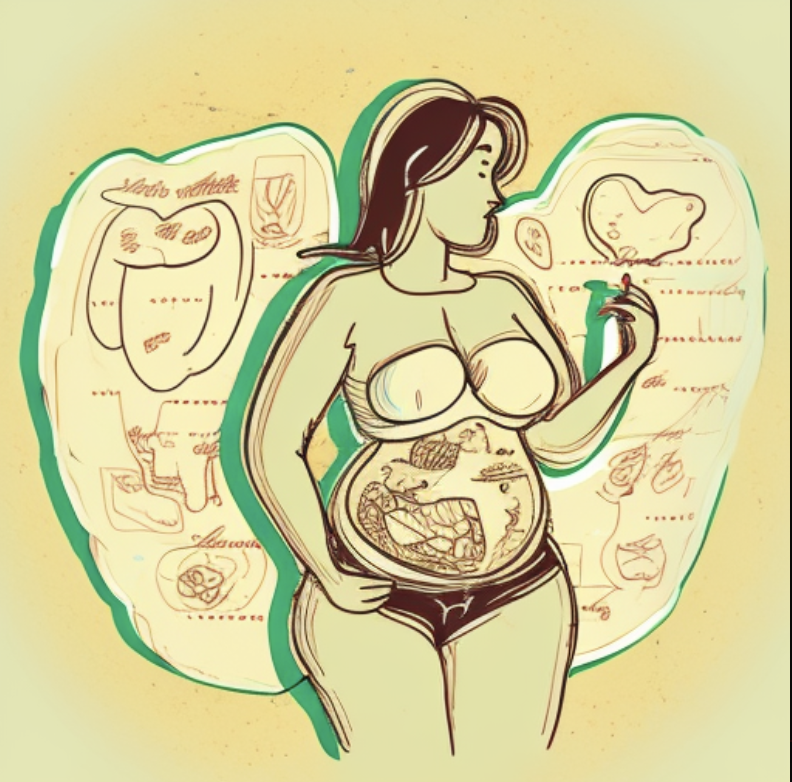If high blood pressure is a concern for you, making changes to your diet can help lower your numbers and improve your overall health. There are several types of diets that have been shown to be effective in reducing blood pressure, including the DASH Diet and the Mediterranean Diet. Additionally, reducing sodium intake can go a long way in managing hypertension. In this article, we’ll discuss these diets in detail and provide tips for making them an effective part of your lifestyle.
Understanding High Blood Pressure
High blood pressure, also known as hypertension, is a condition where the force of blood against the walls of your arteries is consistently high. This can eventually lead to numerous health problems, such as heart disease and stroke. A healthy lifestyle, which includes maintaining a healthy weight, exercising regularly, and eating a balanced diet, can help keep your blood pressure under control.
It is important to understand that high blood pressure is a common condition that affects millions of people worldwide. In fact, according to the World Health Organization, hypertension is the leading cause of cardiovascular disease, which is responsible for 17.9 million deaths globally each year.
What is High Blood Pressure?
Blood pressure is measured by two numbers: systolic pressure and diastolic pressure. The systolic pressure measures the pressure in your arteries when your heart beats, and the diastolic pressure measures the pressure when your heart rests between beats. A normal blood pressure reading is around 120/80 mm Hg. High blood pressure is classified as anything above 130/80 mm Hg.
It is important to note that blood pressure can fluctuate throughout the day, and it is not uncommon for it to be higher in certain situations, such as during exercise or when feeling stressed. However, if your blood pressure consistently remains above the normal range, it is important to speak with your healthcare provider.
Causes of High Blood Pressure
Factors that contribute to high blood pressure include a family history of the condition, being overweight, a lack of physical activity, consuming too much alcohol, and a diet high in sodium and processed foods.
While some risk factors for high blood pressure, such as family history and genetics, cannot be changed, there are many lifestyle factors that can be modified to help prevent and manage hypertension. For example, reducing your intake of sodium and processed foods, increasing your physical activity, and maintaining a healthy weight can all help to lower your blood pressure.
Symptoms and Risks of High Blood Pressure
In most cases, high blood pressure doesn’t have any noticeable symptoms. However, uncontrolled hypertension can lead to severe complications such as heart disease, stroke, kidney damage, and vision loss.
It is important to monitor your blood pressure regularly and speak with your healthcare provider if you have any concerns. Your provider may recommend lifestyle modifications or medications to help manage your blood pressure and reduce your risk of complications.
Overall, understanding high blood pressure and taking steps to manage it can help to protect your long-term health and well-being.
The DASH Diet for High Blood Pressure
The Dietary Approaches to Stop Hypertension (DASH) diet is an eating plan that emphasizes whole grains, fruits, vegetables, low-fat dairy, lean proteins, and healthy fats. It also limits foods high in saturated and trans fats, as well as added sugars and sodium.
The DASH diet is more than just a diet, it is a lifestyle change that can help lower blood pressure and improve overall health. It was developed by the National Heart, Lung, and Blood Institute (NHLBI) to help people live healthier lives and reduce their risk of heart disease, stroke, and other health problems.
What is the DASH Diet?
The DASH diet is designed to be low in sodium, which is one of the main triggers for high blood pressure. It also includes foods that are rich in nutrients like potassium, calcium, and magnesium, which have been shown to help regulate blood pressure. These nutrients can be found in a variety of foods, including fruits, vegetables, dairy products, and lean proteins.
In addition to its blood pressure-lowering benefits, the DASH diet has been shown to help with weight loss, improve insulin sensitivity, and reduce the risk of developing diabetes and certain types of cancer.
Foods to Eat on the DASH Diet
The DASH diet emphasizes vegetables, fruits, whole grains, and low-fat dairy products like yogurt and cheese. It also includes lean proteins such as chicken, fish, tofu, and beans. Additionally, the diet incorporates healthy fats like olive oil and nuts.
Here are some examples of foods to eat on the DASH diet:
- Vegetables: broccoli, carrots, spinach, kale, sweet potatoes
- Fruits: apples, bananas, oranges, berries, melons
- Whole grains: whole wheat bread, brown rice, quinoa, whole grain pasta
- Low-fat dairy: skim milk, low-fat cheese, Greek yogurt
- Lean proteins: chicken breast, fish, tofu, beans, lentils
- Healthy fats: olive oil, nuts, avocado
Sample DASH Diet Meal Plan
Here’s an example of a day on the DASH diet:
- Breakfast: Oatmeal with fruit and nuts, and skim milk
- Snack: Apple slices with almond butter
- Lunch: Whole-grain sandwich with roasted chicken, avocado, and vegetables, served with a side of fresh fruit
- Snack: Carrots and hummus
- Dinner: Grilled salmon with brown rice and roasted asparagus
- Dessert: Greek yogurt with honey and berries
Remember, the DASH diet is not a quick fix or a fad diet. It is a sustainable way of eating that can help improve your health over time. Start by making small changes to your diet and gradually incorporating more DASH-friendly foods into your meals.
Consult with a healthcare professional before making any major changes to your diet or exercise routine.
The Mediterranean Diet for High Blood Pressure
The Mediterranean diet is a heart-healthy eating plan that emphasizes plant-based foods such as fruits, vegetables, whole grains, legumes, and nuts. It also includes lean proteins like fish and poultry, and healthy fats like olive oil and avocado.
The Mediterranean diet has been found to be particularly effective for individuals with high blood pressure, also known as hypertension. High blood pressure is a common condition that affects millions of people worldwide, and it can lead to serious health problems such as heart disease and stroke. However, research has shown that following the Mediterranean diet can help to lower blood pressure and reduce the risk of these health problems.
What is the Mediterranean Diet?
The Mediterranean diet emphasizes foods that are traditionally consumed in countries bordering the Mediterranean Sea, such as Greece and Italy. These foods are typically fresh, whole, and minimally processed. The diet is rich in fruits, vegetables, whole grains, legumes, and nuts, and it includes moderate amounts of fish, poultry, and dairy products. Red meat and sweets are limited.
The Mediterranean diet is not just a diet, but a lifestyle. It encourages regular physical activity, socializing with friends and family over meals, and enjoying food in a relaxed and stress-free environment.
Foods to Eat on the Mediterranean Diet
The Mediterranean diet emphasizes fresh fruits, vegetables, whole grains, legumes, and nuts. These foods are rich in vitamins, minerals, and fiber, and they provide the body with the nutrients it needs to function properly. They are also low in saturated fat, which can help to reduce cholesterol levels and lower blood pressure.
The Mediterranean diet includes oily fish like salmon and sardines, which are rich in omega-3 fatty acids. Omega-3 fatty acids have been found to reduce inflammation in the body and improve cardiovascular health. Lean proteins like chicken and turkey are also included, as well as healthy fats like olive oil, nuts, and avocado.
Sample Mediterranean Diet Meal Plan
Here’s an example of a day on the Mediterranean diet:
- Breakfast: Frittata made with eggs, vegetables, and feta cheese, served with a slice of whole-grain bread
- Lunch: Greek salad with grilled chicken, feta cheese, and olives
- Afternoon snack: Carrots and hummus
- Dinner: Grilled salmon with roasted vegetables, served with whole-grain pasta
- Evening snack: Apple slices with almond butter
The Mediterranean diet is not only delicious, but it is also easy to follow. With its emphasis on fresh, whole foods and its focus on a healthy lifestyle, it is a great way to improve your overall health and lower your risk of chronic diseases like high blood pressure.
Reducing Sodium Intake for High Blood Pressure
Sodium is a mineral that is essential for the body to function properly. However, consuming too much sodium can cause high blood pressure, which can lead to heart disease and stroke. Reducing sodium intake can be challenging, as it’s found in many processed foods. Here are some tips for reducing sodium in your diet:
The Importance of Limiting Sodium
Reducing sodium intake can help lower blood pressure and reduce the risk of heart disease and stroke. The American Heart Association recommends consuming no more than 2,300 milligrams of sodium per day, and ideally, less than 1,500 milligrams for those with high blood pressure. High blood pressure is a serious condition that affects millions of people worldwide. It can cause damage to the arteries and increase the risk of heart attack, stroke, and kidney failure. Therefore, it’s essential to take steps to lower blood pressure, and reducing sodium intake is an effective way to do so.
Tips for Reducing Sodium in Your Diet
Reducing sodium intake requires a conscious effort to make healthier food choices. Here are some tips to help you reduce sodium in your diet:
- Read food labels and look for products that are labeled “low sodium.” Many packaged and processed foods contain high levels of sodium, so it’s essential to check the labels before purchasing.
- Choose fresh, whole foods over processed ones. Fresh fruits and vegetables, whole grains, and lean proteins are all excellent choices for a low-sodium diet.
- Use herbs and spices instead of salt to add flavor to meals. Spices like garlic, onion, cumin, and paprika can add a lot of flavor to dishes without adding sodium.
- Avoid adding salt to foods during cooking or at the table. Instead, try using other seasonings like lemon juice, vinegar, or hot sauce.
Low-Sodium Food Swaps
Here are some food swaps that can help reduce sodium intake:
- Use lemon juice or vinegar on salads instead of store-bought dressings, which can be high in sodium. You can also make your own dressing with olive oil, vinegar, and herbs.
- Replace canned vegetables with fresh or frozen options. Canned vegetables are often high in sodium, so choosing fresh or frozen options can help reduce your sodium intake.
- Choose fresh meats over processed ones like hot dogs and deli meats. Processed meats are often high in sodium and other preservatives, so it’s best to choose fresh meats whenever possible.
- Limit the amount of cheese you consume, as it can be high in sodium. Cheese is a delicious addition to many dishes, but it’s also high in sodium. Try using smaller amounts or choosing low-sodium options.
Overall, changing your diet can be an effective way to reduce high blood pressure and improve your overall health. Incorporating the DASH or Mediterranean diets and reducing sodium intake can help you achieve your goals. Remember, small changes can add up to significant results, so start by making one or two changes at a time and work your way up to a healthier lifestyle.
*The information provided on this website is intended for general informational purposes only and should not be considered as medical advice. It is important to always consult with a qualified healthcare professional regarding any medical conditions, symptoms, or concerns you may have. This website does not provide medical diagnosis, treatment, or advice, and reliance on any information provided on this site is solely at your own risk.





